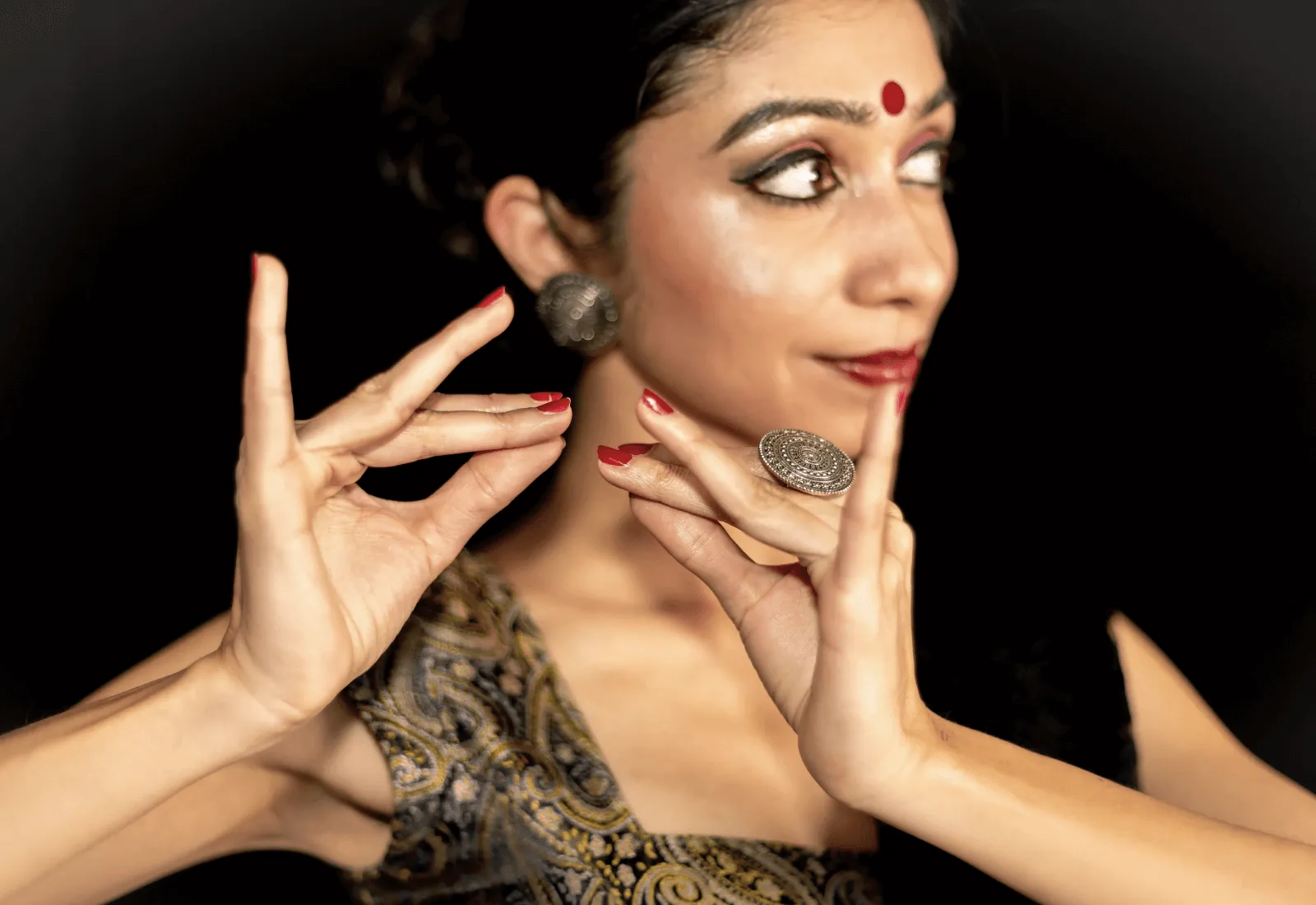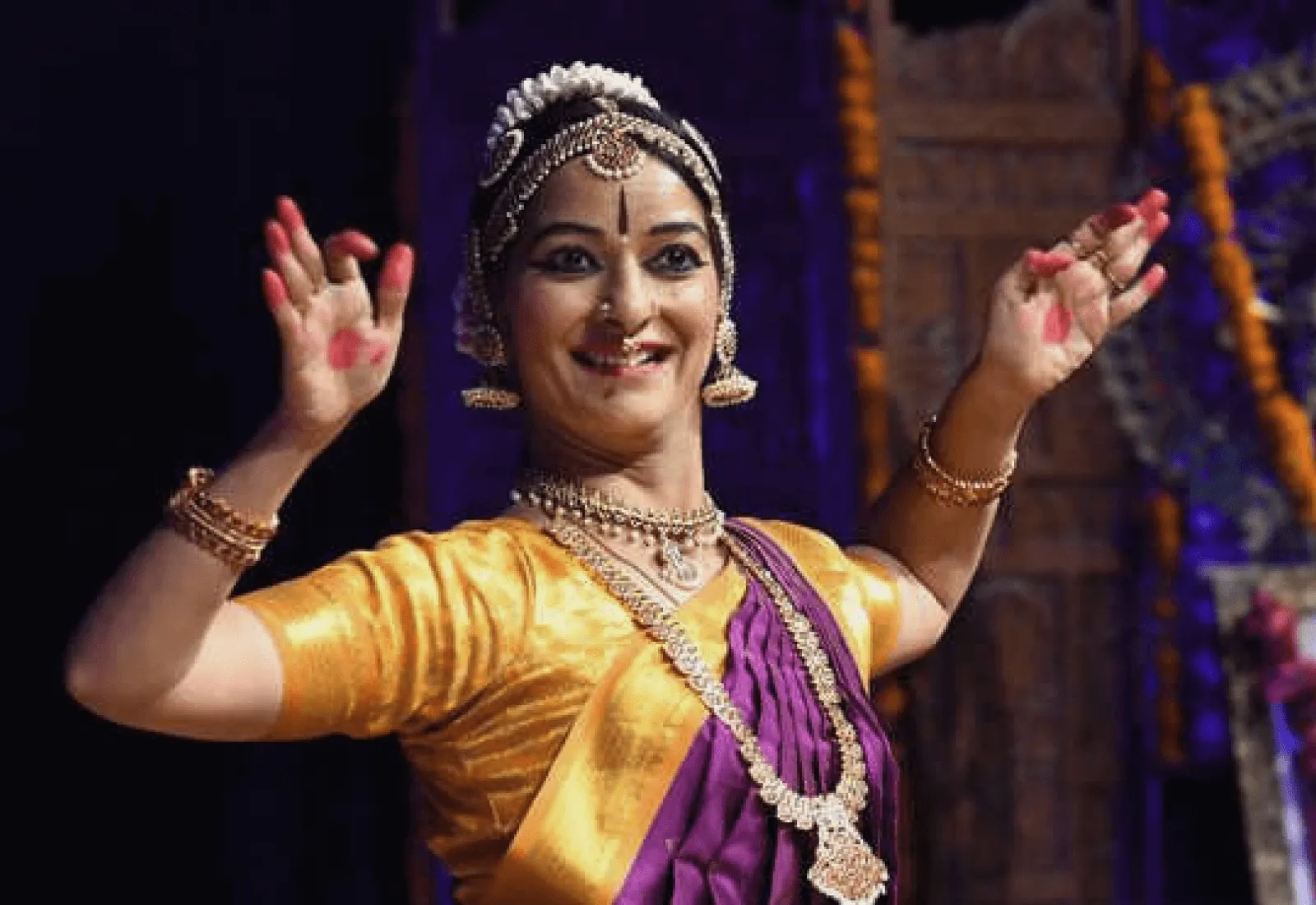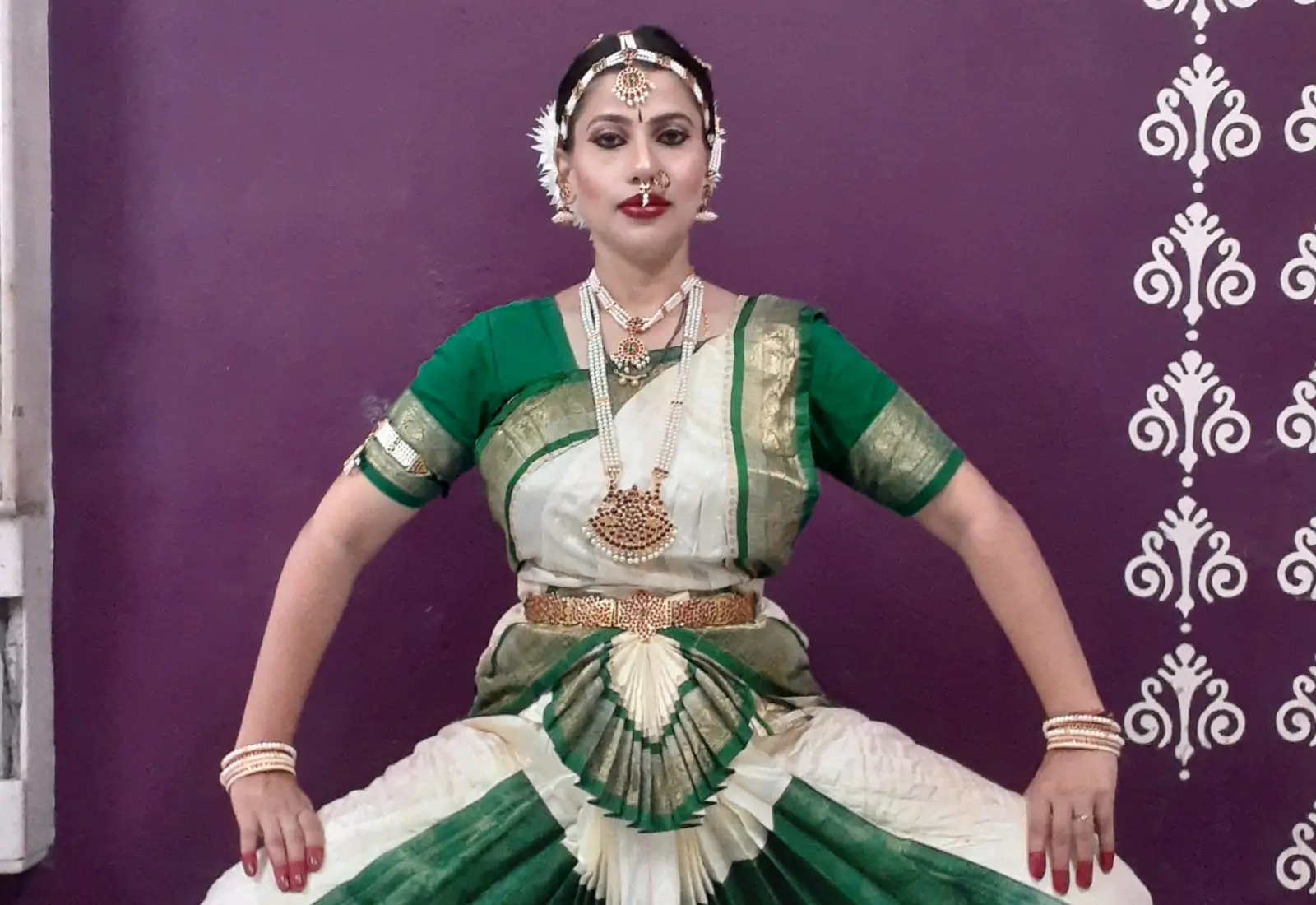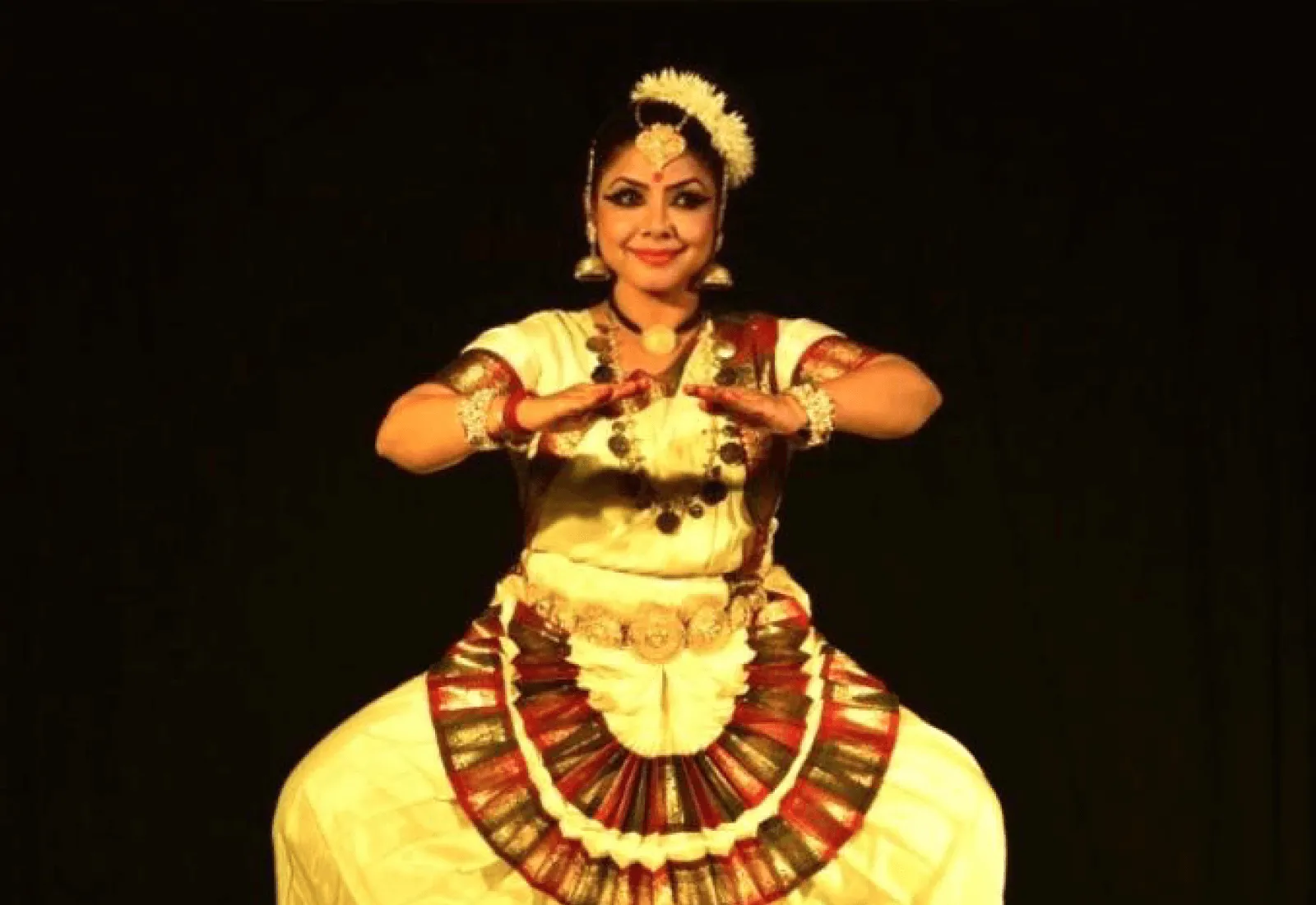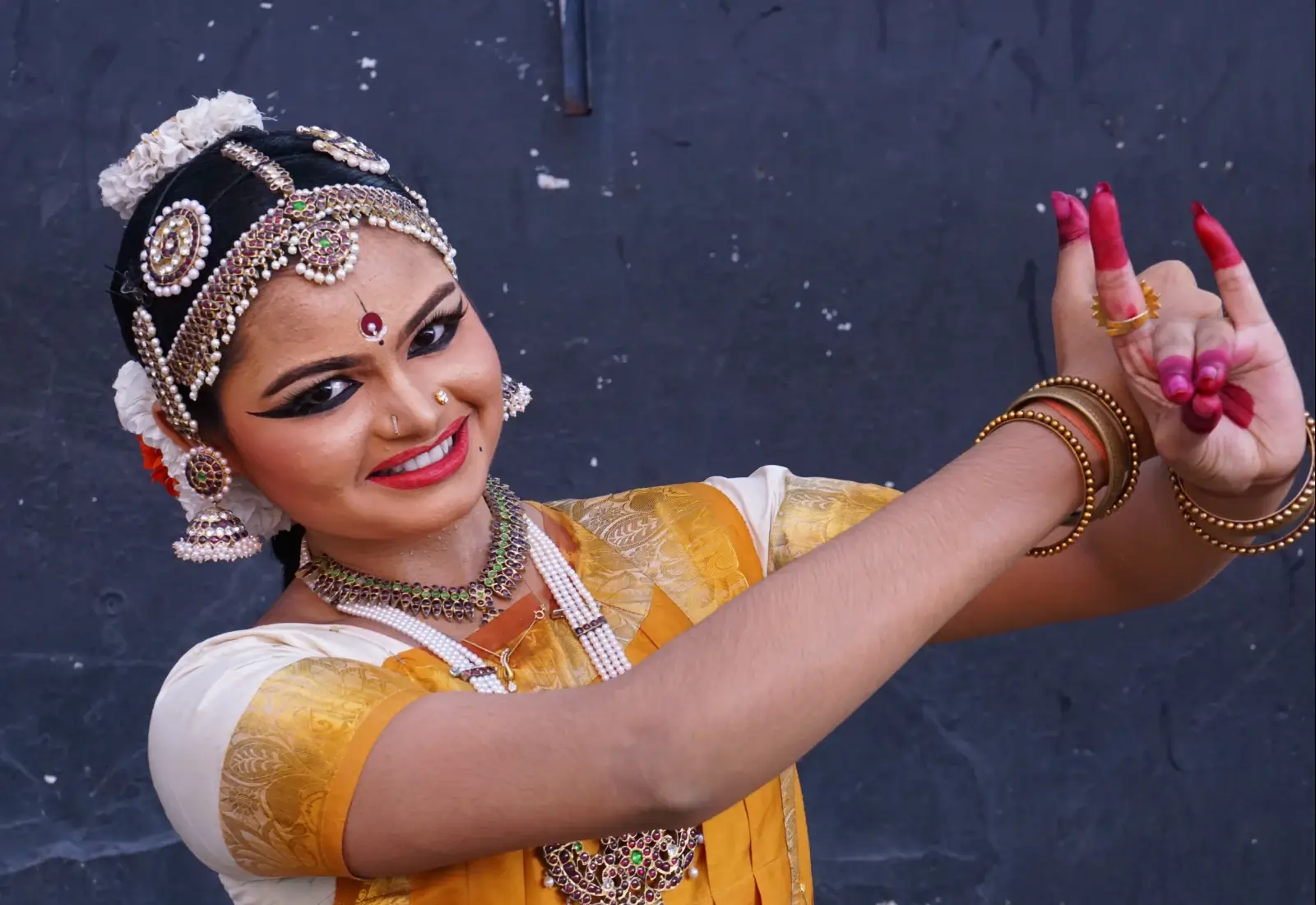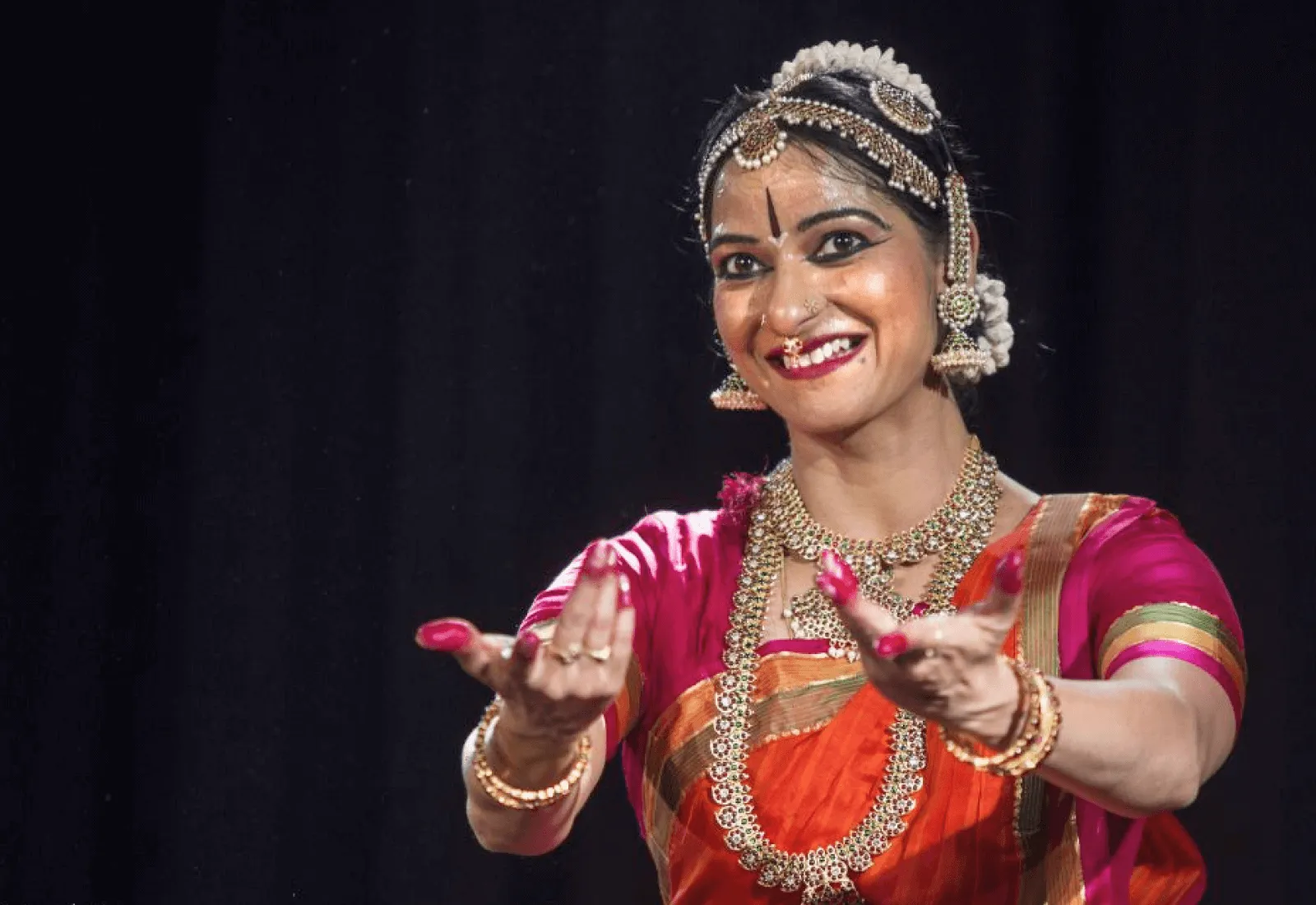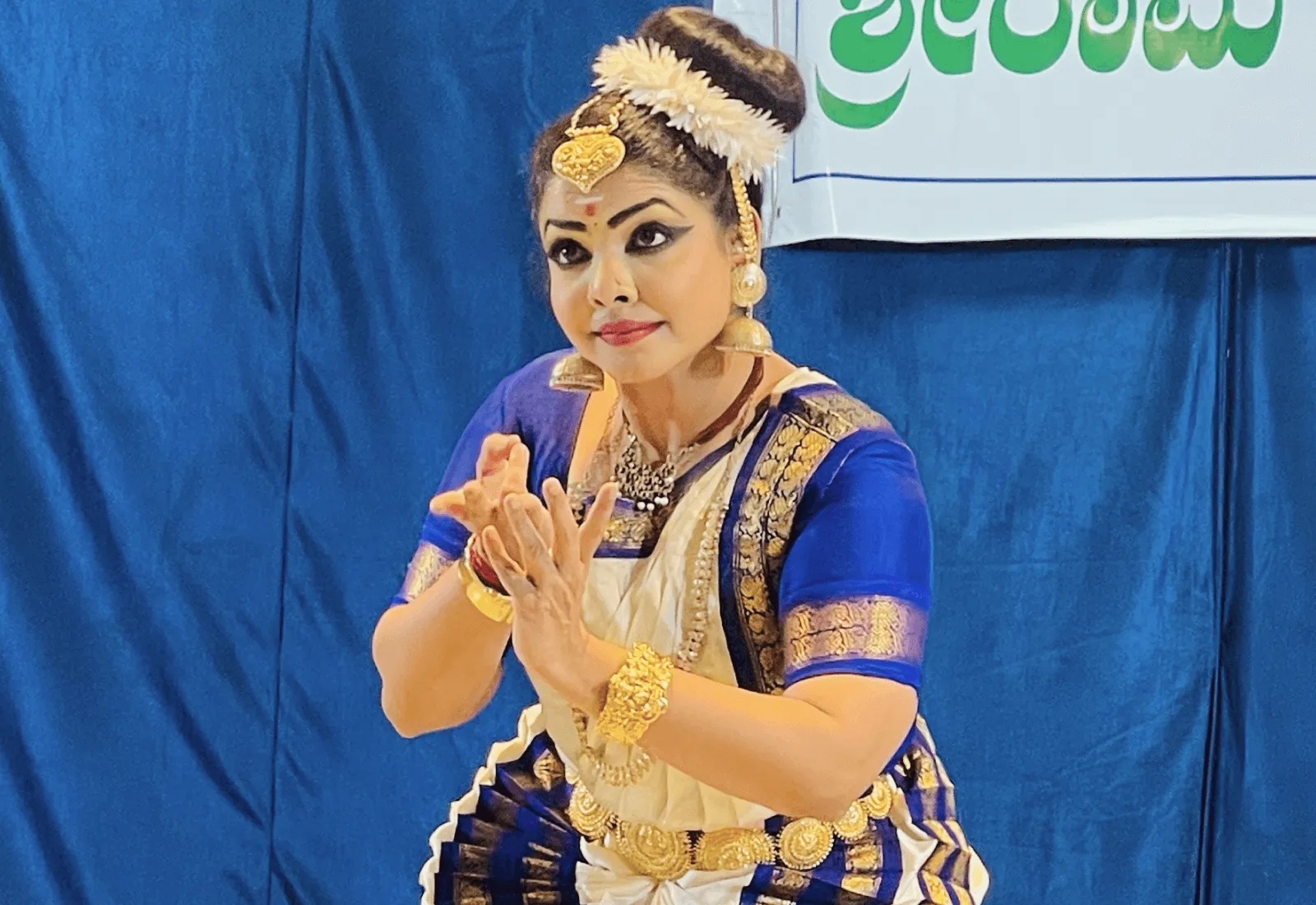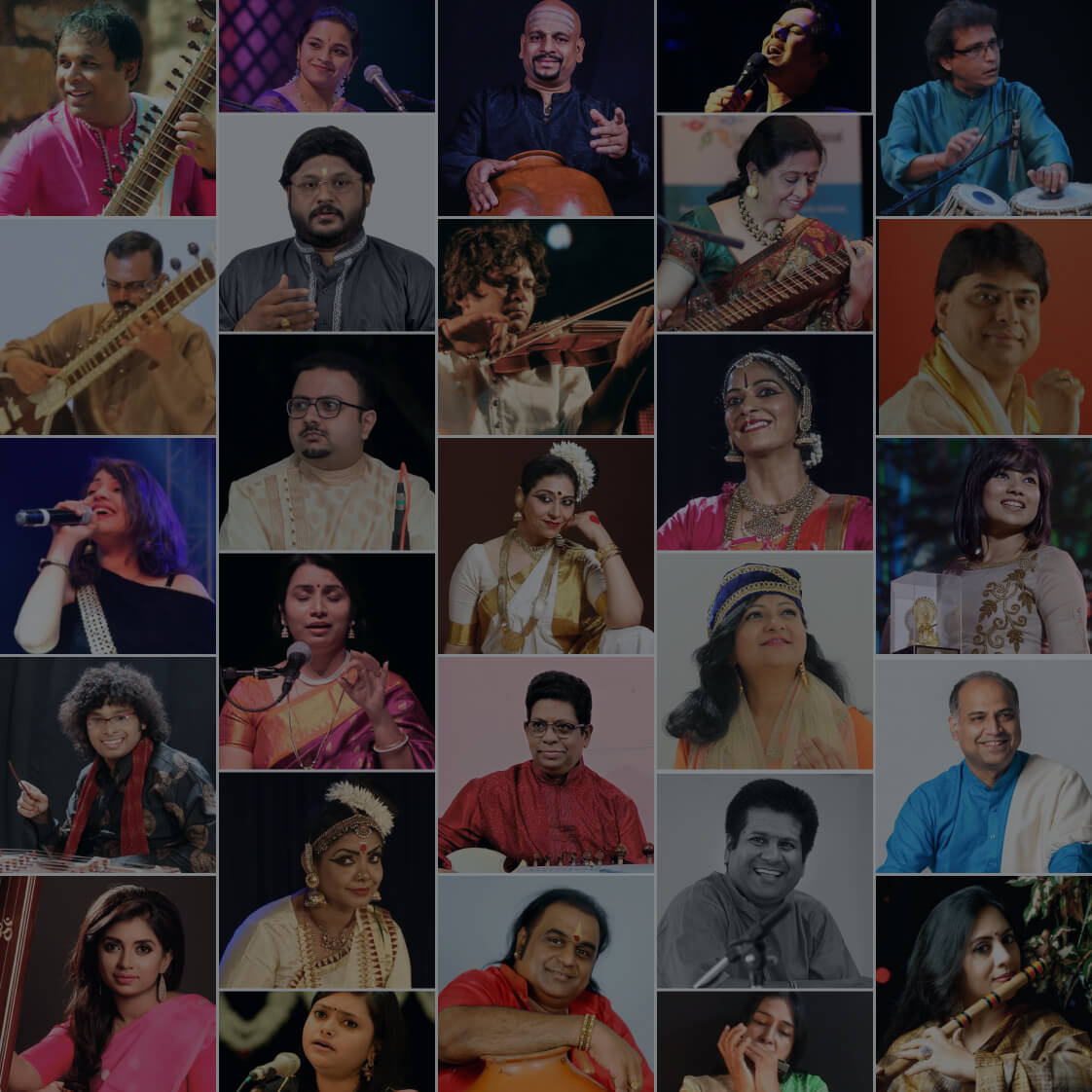The 7 Stages of Bharatanatyam
Bharatanatyam is a living tradition that embodies India’s cultural and spiritual heritage. It originated from the sacred temples of Tamil Nadu. Songs and dance used to be a part of religious offerings to the deity. Bharatanatyam started in the same manner. As a way for devotees to communicate with the divine.
Bharatanatyam has evolved and endured over time. It has revived and stayed relevant today. At its core, Bharatanatyam is a mix of devotion, discipline, and storytelling.
This essence comes alive in the seven stages of performance. Each stage is more than a technical unit. It is a gradual progression that unfolds the saga bit by bit. The ensemble grandeur of costume and adornment, and the emotional intensity that adds to the storytelling.
Let us walk through these stages one by one. Let's experience how history, tradition, and artistry converge in the flow of Bharatanatyam.
7 Bharatanatyam Stages - Elaborated
Stage 1: Pushpanjali
Stage 2: Alarippu
Stage 3: Jatiswaram
Stage 4: Shabdam
Stage 5: Varnam
Stage 6: Padam
Stage 7: Tillana
Stage 1: Pushpanjali – Offering at the Threshold
Every Bharatanatyam performance begins with Pushpanjali, meaning “an offering of flowers.” The dancer bows to the stage, the teacher, the musicians, the audience, and the divine. This moment of humility comes from temple tradition. Devadasis used to start their sacred service by placing garlands at the deity’s feet.
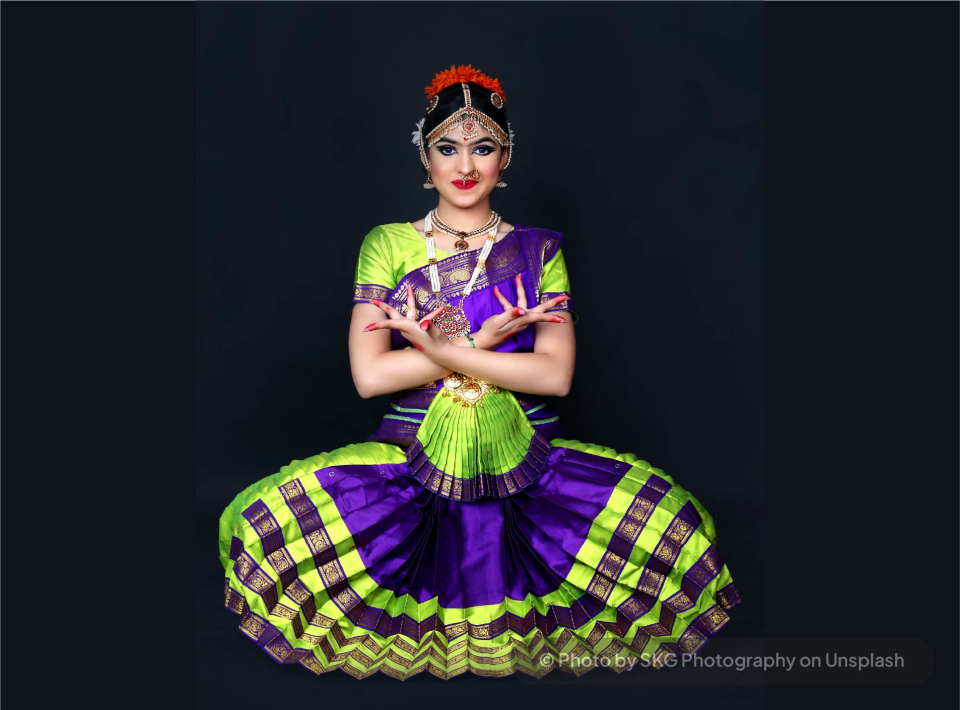
The visual grandeur of Bharatanatyam becomes evident even here. The dancer steps forward in a shiny silk costume. The fan-like pleats at the front spread out as she bows. The shimmering ornaments and jingling ghungroos on the ankles create a lively vibe. The faint fragrance of fresh flowers in the hair adds to the temple atmosphere on stage. In Pushpanjali, history, ritual, and visual symbols blend together. This reminds us that the art serves as both prayer and performance.
Stage 2: Alarippu – The Flowering of the Body
After the offering comes awakening. Alarippu, meaning “to blossom,” is the unfolding of the dancer’s body to the rhythm. Head, eyes, and neck move with the beats. Then, the movement spreads to the arms, torso, and feet.
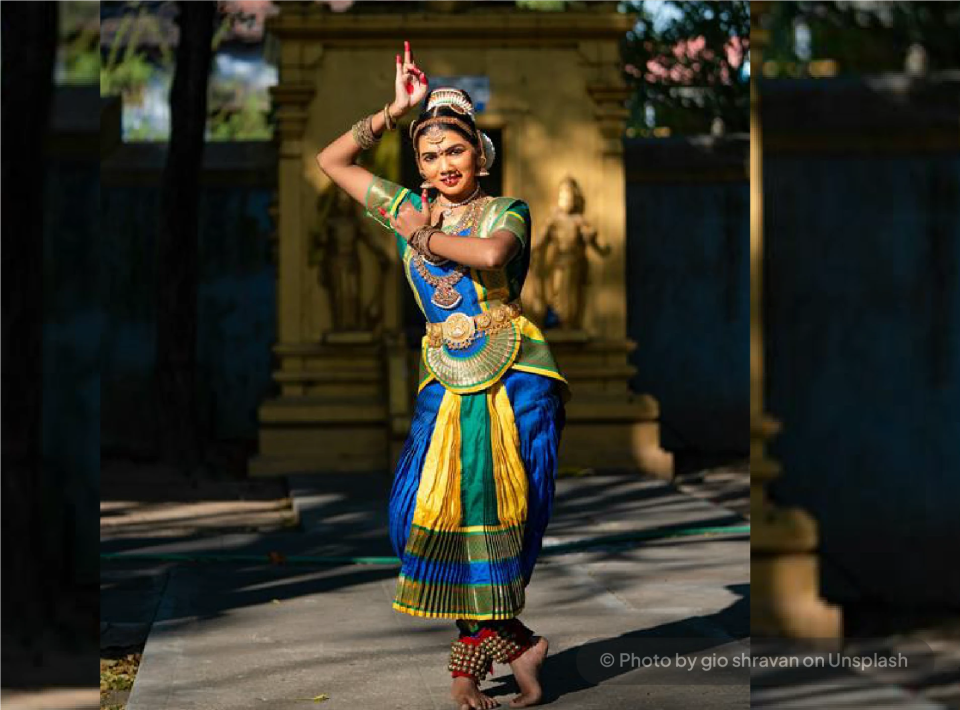
This stage shows the dancer’s hard work and the temple carvings that inspire Bharatanatyam. The stone sculptures of apsaras and deities in South Indian temples show the exact Bharatanatyam postures. It is as though the dancer’s living body continues what was once chiseled in stone centuries ago.
The costume here enhances the metaphor of blooming. The front pleats open like petals. The jewelry sparkles under the stage lights, and the ghungroos ring with each step. What started quietly now comes alive with rhythm. It shows that the dance has truly begun.
Stage 3: Jatiswaram – The Dance of Rhythm and Geometry
In Jatiswaram, the dance shifts into pure rhythm. There is no story, no words — only the interplay of footwork, musical notes, and bodily geometry. This stage shows the dancer’s stamina and precision. Bharatanatyam has been admired for these traits since its temple origins.
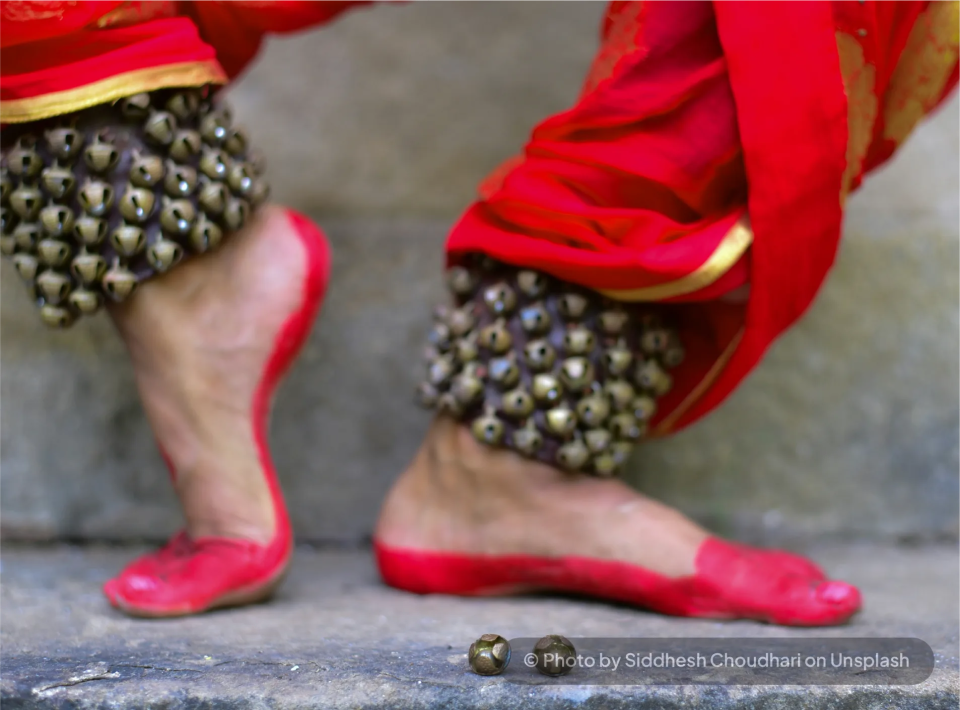
Jatiswaram shows how temples offered nritta, or pure dance, as a way to show devotion. This dance stands alone and doesn't rely on a story. The rhythmic patterns echo the cosmic order itself, a reminder of Shiva’s dance of creation and destruction.
The grandeur of costume reaches a new dimension here. Each step and kick reshapes the pleated fabric into new forms—triangles, diagonals, and arcs. The jewelry, too, becomes part of the rhythm, glinting with movement. Bharatanatyam at this stage displays discipline and beauty. It also shows symmetry and spirituality in perfect harmony.
Stage 4: Shabdam – When Words Enter the Dance
With Shabdam, meaning “sound” or “word,” the performance moves into storytelling. The dancer brings verses to life with expressive gestures and facial expressions. These verses often include devotional hymns or poems praising deities and kings.
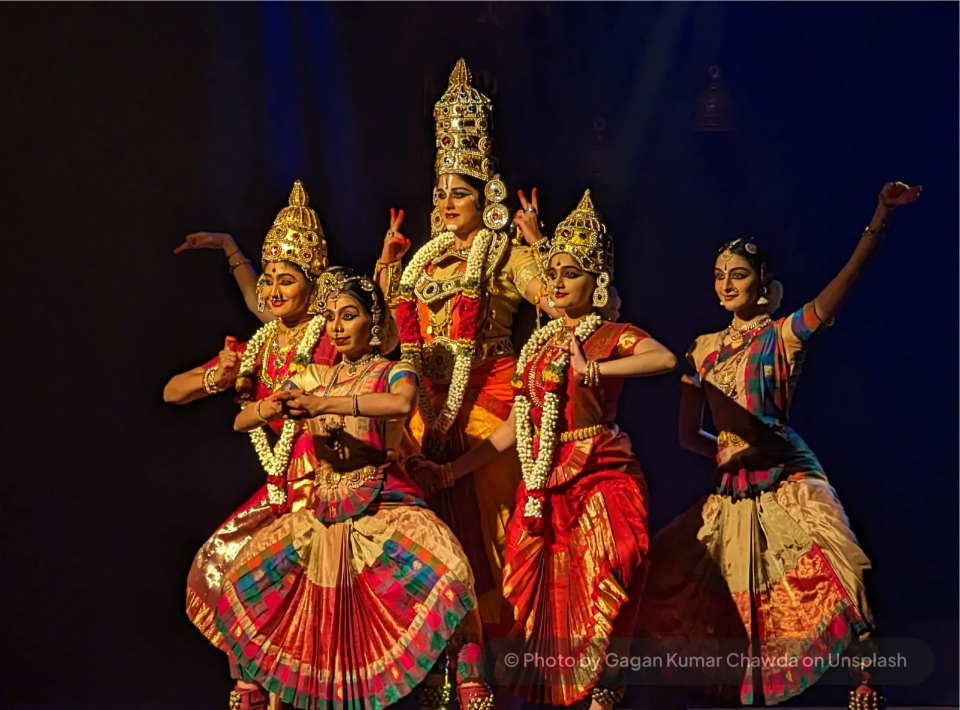
Here, the deep roots of Bharatanatyam’s history resurface. Devadasis once performed stories of gods and goddesses in temples. They used gestures to tell mythology to worshippers. Each expression was an offering, each gesture a bridge between the human and the divine.
The costume plays a narrative role too. The sparkling ornaments—earrings, necklaces, bangles—grab attention. The dancer gestures toward the heavens, showing longing, devotion, or surrender. The anklet bells echo each step of the story, punctuating emotion with rhythm. In Shabdam, the dancer does not just move — they speak, pray, and emote through every fiber of their being.
Stage 5: Varnam – The Heart of the Performance
Varnam is the centerpiece of Bharatanatyam and the most demanding stage of all. It combines pure dance (nritta), expressive storytelling (nritya), and dramatic interpretation (natya). Mythological tales come alive here. They tell stories of gods, heroes, and lovers. These stories shine through intricate footwork and deep expressions.
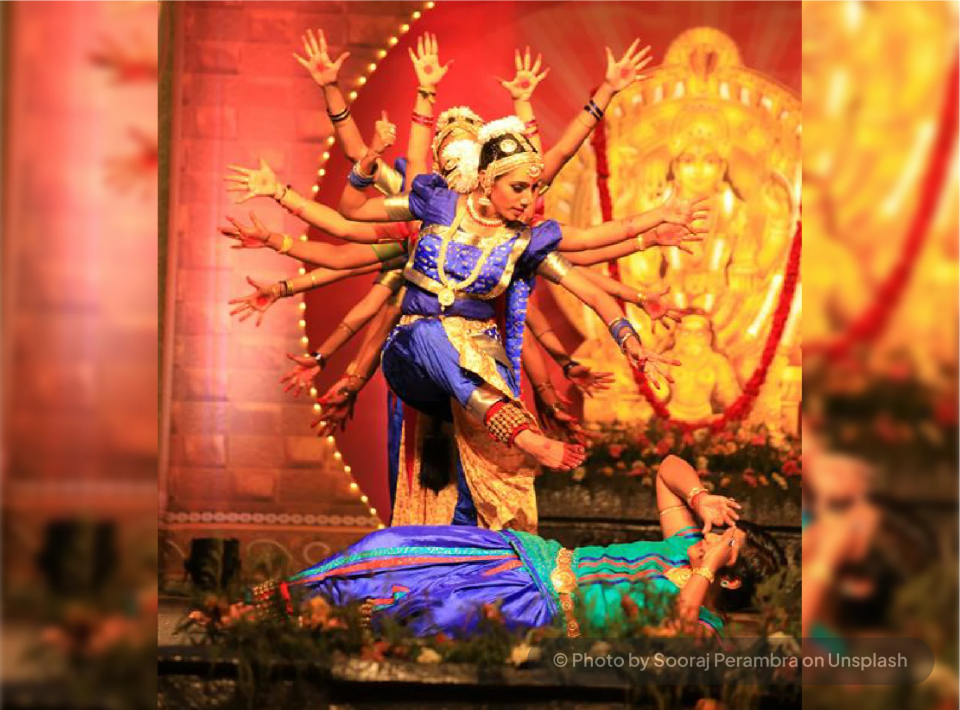
Historically, the Varnam was seen as the pinnacle of devotion and discipline. To perform it was not just to entertain but to enact sacred myths in their full grandeur. Varnam needs both stamina and focus. This shows the hard training dancers go through.
The costume and adornments come alive here more than in any other stage. As the dancer leaps, bends, and stamps, the silk pleats flare like living sculptures. They resemble the stone icons found in temple halls. Jewelry highlights every move. A necklace flashes with a quick turn, and bangles glint as hands make sacred mudras. In Varnam, history, visual beauty, and spiritual devotion come together. This mix creates an unforgettable experience.
Stage 6: Padam – The Poetry of the Soul
After the intensity of Varnam comes the quiet intimacy of Padam. These songs slow the rhythm. This lets the dancer feel their emotions. The themes center on love, longing, separation, and devotion. They come to life through gentle facial expressions and subtle gestures.
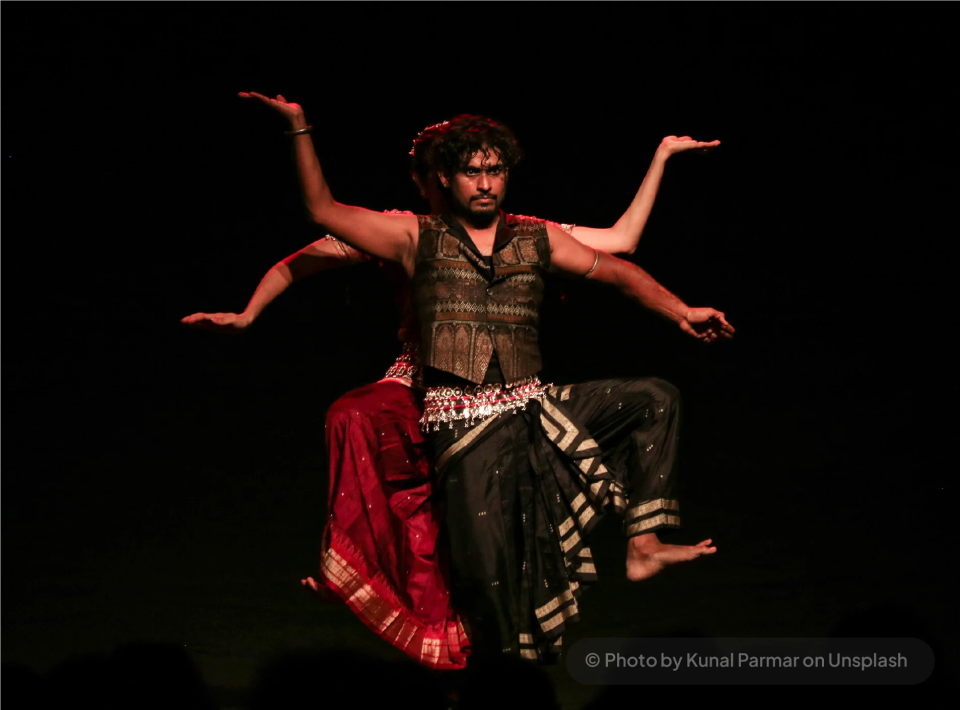
This stage links to Bharatanatyam’s temple history. Devadasis used abhinaya (expression) to show the emotional bond between devotee and deity. The Padam is less about grand geometry and more about the inner landscape of the heart.
The costume supports this shift. The shimmering pleats fade into the background. Now, the ornaments highlight the eyes, hands, and face. That’s where emotion shines the brightest. The anklet bells quiet down as movements slow. This lets silence and expression hold the weight of meaning. In Padam, Bharatanatyam becomes less of a performance and more of a whispered prayer.
Stage 7: Tillana – The Joyous Finale
The journey ends with Tillana, a vibrant and celebratory conclusion. Fast rhythms, playful gestures, and dazzling footwork fill the stage with joy. While the storytelling recedes, the sheer exuberance of movement takes center stage.
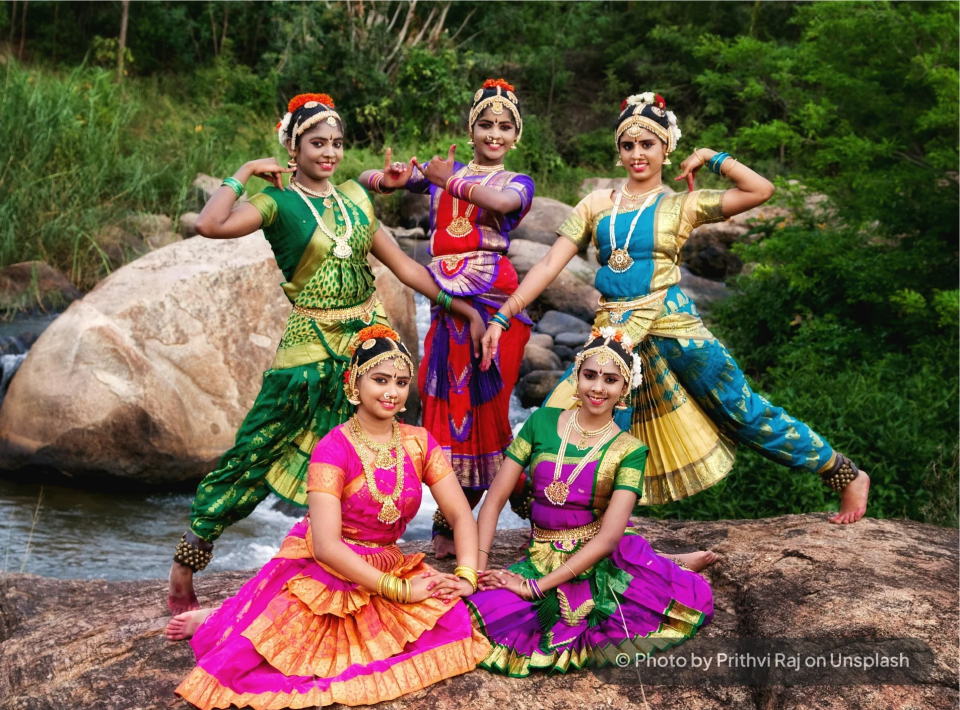
This stage brings back the joyful vibe of temple festivals. Dance and music would fill the air with excitement. It is a reminder that devotion is not only solemn but also joyful — a celebration of life itself.
The costume reaches its climax here. The pleated fan flickers with each quick step. Jewelry sparkles with playful winks and turns. The ghungroos thunder together with the beat. The performance starts with simple flowers. It ends in a burst of color, sound, and energy. This shows Bharatanatyam's timeless beauty.
The Significance of the Seven Stages of Bharatanatyam
The seven stages outline a journey. It moves from devotion to awakening. Then, it shifts from discipline to mastery. Finally, it goes from intimacy to celebration. They mirror the dancer’s growth not just as an artist but as a spiritual seeker. Each stage connects closely to Bharatanatyam’s history in temple rituals. It also depends on costumes and adornments that highlight its sculptural beauty.
Bharatanatyam is more than a classical art; it’s a living scripture. It’s written in rhythm, color, and emotion.
Conclusion - The Seven Stages of Bharatanatyam
Bharatanatyam is more than choreography. It is an unbroken dialogue between the human and the divine. A sacred language nurtured through centuries of tradition. The seven stages of its performance serve as both a technical guide and a spiritual journey. It starts with a simple Pushpanjali and ends with the joyful freedom of Tillana.
As the dancer moves through these stages, they hear echoes of temple halls. The radiance of silk and jewelry surrounds them, and ancient rhythms pulse in the air. What emerges is more than a performance; it's a sacred journey. This journey continues to inspire and captivate audiences worldwide.
Seeing Bharatanatyam shows the heart of Indian culture. Learning it means living that spirit with each movement, gesture, and beat. The seven stages remind us that dance, when performed with devotion, becomes more than art — it becomes life itself.
If you are looking for a good Bharatanatyam teacher who can teach you the nuances of this dance form in explicit details, you can explore online Bharatanatyam classes.
The seven stages are Pushpanjali, Alarippu, Jatiswaram, Shabdam, Varnam, Padam, and Tillana. Each stage has a distinct role—ranging from offering and awakening to rhythm, storytelling, expression, and a joyous finale.
Bharatanatyam originated in the temples of Tamil Nadu as an offering to deities. Beyond being a classical art form, it is considered a spiritual journey that combines rhythm, devotion, and storytelling to connect the dancer and audience with the divine.
Varnam is the centerpiece of a Bharatanatyam performance. It combines pure dance (nritta), expressive storytelling (nritya), and dramatic interpretation (natya). It demands stamina, precision, and emotional depth, making it the most challenging and defining stage.
Traditional costumes and ornaments are not just decorative; they accentuate gestures, footwork, and expressions. The pleated silk fan highlights movement, while jewelry and ghungroos (ankle bells) emphasize rhythm and storytelling, reflecting the art’s temple heritage.
While technically rigorous, Bharatanatyam is rooted in devotion. Each stage—from Pushpanjali’s offering to Tillana’s celebration—reflects a spiritual journey. The dance is seen as an offering to the divine, making it both prayer and performance.


